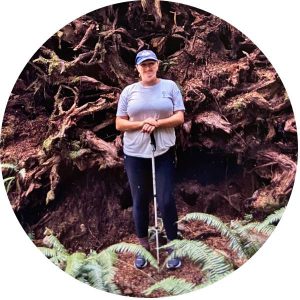
Meagan Bordi, Hamilton, Ontario, Canada
Growing up as a girl with severe Von Willebrand Disease, the mindset towards my treatment was always reactive instead of proactive. With the exception of major surgical procedures, my parents and I were taught that treatments were only to be given in response to injury instead of used to help prevent injury. In fact, I didn’t even realize preventative treatments were a practical option until I learned about the treatment options for boys with Hemophilia.
When I was 14, I started to notice pain in my ankle after physical activity. I thought perhaps it was just a sprain, so I rested, applied ice, and waited until the pain went away. The pain went away, but would immediately come back after any physical activity and was beginning to worsen. After many appointments over the course of a year I was diagnosed with Osteochondritis Dissecans. I had pieces of bone missing in my ankle joint and my joint cartilage was destroyed, now causing almost constant pain in my ankle. While the causes for this disease are still relatively unknown, the doctors believed it was most likely due to repetitive small bleeds in my ankle. I didn’t understand how it could have happened, the only sport I played was soccer, and although the fields I played on weren’t great, I was always careful of any injuries to my joints. I spent my four years of high school wearing air casts, using canes and crutches and going from doctor to doctor looking for a solution to the pain. The best solution presented to me was an ankle fusion, but multiple doctors did not want to operate due to my age and advised me to wait another five years.
With seemingly no light at the end of the tunnel, my mental health began to deteriorate and I became depressed. I never wanted to get out of bed, I was constantly late for school, and my grades began to drop. It was almost a year before I said anything about how I was feeling to my parents. It can be very difficult and frustrating at times to grow up with a bleeding disorder, and throughout my childhood and adolescence I was constantly missing out on activities and sports with my friends. I think most kids with a bleeding disorder pride themselves on developing a mental toughness early in their life but being injured, being in pain, and seeing other kids getting to do things you are restricted from, slowly wears away at that toughness. I think there needs to be a more open discussion about mental health in the clinics. Kids need to know that it’s okay to feel upset sometimes about their diagnosis and that it is okay to open up when they feel that mental toughness wearing thin.
It was around three years after my initial diagnosis that I finally found a doctor to operate. Just after my 18th birthday in March of 2012, I had my left ankle fused. Looking back now, I can’t help but feel bitter sometimes about how this whole situation played out. I think there needs to be a change in mind-set towards the treatment of women with bleeding disorders. I feel sometimes there is a more dismissive attitude towards women with bleeding disorders and that women may not get the same detail or level of care that boys and men with Hemophilia receive. I wonder if preventative treatments and the more proactive approach that is presented to boys with Hemophilia was recommended for me, would my ankle still be fused, or would I still be able to run and play the sport I love today.
I hope that by sharing my story, women can feel more empowered to ask for the help they need and advocate for themselves when they have questions and concerns about their healthcare.









